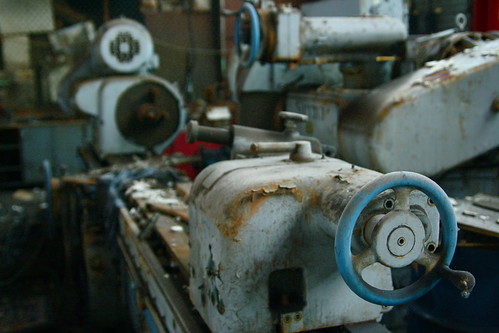
My recent post about 3D printing argued for the idea that it’s a technology that will soon produce some, but not all of the goods we use. So if that’s the case, which goods, and why those? And why not others?
To keep things simple, I’m not going to engage in speculation about what materials will or won’t be printable in the near or even distant future. This is a technology that’s developing fast, and I don’t think my guesses about that aspect are very useful. For the purposes of this post, I’m going to assume that many things are possible. What I’ll try to do is apply some knowledge of manufacturing from an Industrial Design point of view to making sense of where 3D printing is going to be used as a production method for some of the products we buy every day.
What will drive 3D printer adoption?
Demand for product personalization. Consumers have high expectations for product choice, and increasingly expect to be able to personalize these choices. This can be expressed through changes to a product by custom configuration or surface decoration, either way, creating the product on demand allows far more choice with no additional tooling or inventory costs.
The other interesting application under the general category of personalization is applying biometric information derived through 3D scanning to produce a completely personalized item. This can include a wide variety of medical, orthopedic and sports-related applications. As an example, this story was doing the rounds on Twitter last week — and it’s really just the tip of the iceberg.
High energy costs are eventually going to disrupt the current model of off-shore production. The energy costs involved in shipping a high percentage of what we use every day halfway round the world will soon become prohibitive if oil continues to trend upwards in price. And it will. The first products to feel the effect will be bulky, lower value items. Their high shipping cost to value ratio is going to drive manufacturers to look at other production options.
Demand for product diversity. We live in a time where abundance of choice in consumer goods is expected. All that choice fragments markets — more things, but fewer units of each. At one point, for some products, the cost of tooling starts to become uneconomically high. When that happens, an opportunity for 3D printing opens up, as the cost of tooling for each new product under that scenario is essentially zero.
What will limit it?
Resolution, detail and precision cost money in manufacturing. They require tools and machines capable of the precision required — the greater the precision, the greater the cost. Some products require precision only where they connect to something else. This kind of selective precision is possible in traditional manufacturing through secondary operations or tooling that is selectively precise. In 3D printing, this doesn’t really work – you’re paying for the same precision throughout the part whether you need it or not. Products, especially large ones, that need selective precision just aren’t great candidates for 3D printing.
Multi-material or high technology products — things that require many different components of differing materials and precisions are not well suited to 3D printing. Barring huge technological breakthroughs these will continue to require multi-step procedures and assembly operations. Where volumes are large enough, these operations can be done robotically. Where volumes are too low, humans will do these jobs, but probably not close to home. (see next point).
Low Offshore labour costs — As long as labor costs elsewhere remain inexpensive by western standards, there will be a continued incentive to produce assembled products in traditional ways. This probably won’t change until energy costs rise higher still, making shipping prohibitively expensive, and/or labor costs rise significantly throughout the developing world. Once this happens, look for 3D printing to take off in a big way. Keep in mind that highly complex small products like cellphones have a very low shipping cost relative to overall value and will be immune to this effect for longer than anything else.
What are the first real products we’ll see being 3D printed?
Personal fit products — This is clearly an important and truly exciting use of the potential of 3D printing. The applications for medical, dental, orthopedic and sports equipment fit precisely to you are almost boundless. This technology will certainly be disruptive to the traditional industries that create personal fit items now.
Simple products with high bulk and low complexity. This ties back directly to the problem of high shipping costs for big bulky plastic things, among others. Moving production of these products a lot closer to consumption geographically will be an increasing imperative as oil trends upward in price.
Simple decor and lifestyle items where a large diversity of choice in form, texture and color is important. Keeping tooling costs low and supply lines short will allow sellers of goods in this class to be nimble to keep up with changing consumer tastes. The ability to further customize and personalize these products with variations in form and surface treatment will be further incentive.
Conclusion
That’s my view of where the opportunities lie for 3D printing in the short to medium term. I’d never rule out technological breakthroughs that might turn all my assumptions on their head, but until I see them, I’ll stick with this assessment. Exciting times for design and manufacturing…your thoughts?
photo by flickr user joguldi
Like this? More from the technology category.
Follow me on Twitter (@intudes) for interesting links and occasional observations.
Subscribe to the RSS feed, and don’t miss another post.